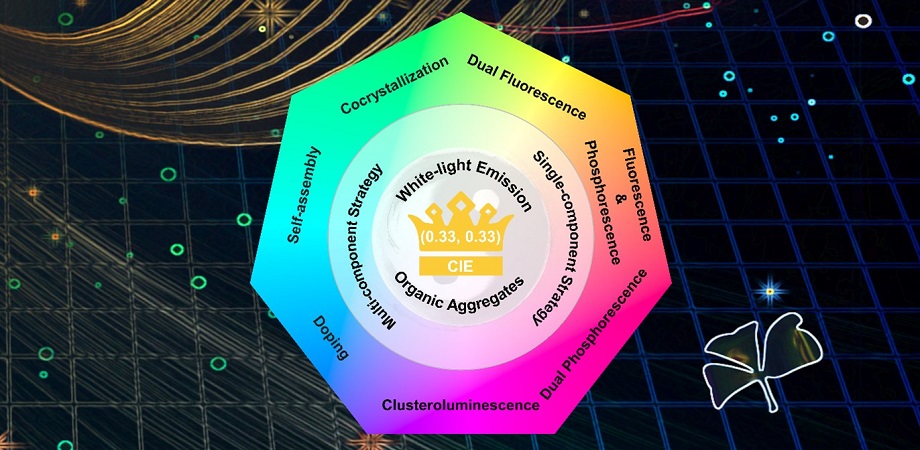Organic aggregates: New insights on white light

White light, which includes multicolored visible components, affects the rhythm of organisms and has the potential for advanced applications in communications, as well as illumination and display. Development and commercialization of white-light emitters based on inorganic diodes and phosphors has progressed rapidly within the past few decades. Organic materials offer better processing and flexibility and are more environmentally friendly, but an effect known as aggregation-caused quenching (ACQ) has hindered the development and use of many conventional organic emitters.
In 2001, Ben Zhong Tang's group at The Hong Kong University of Science and Technology (HKUST) remarked that some luminogens can strongly emit in the aggregate and solid states, thanks to a photophysical phenomenon they dubbed aggregation-induced emission (AIE), which opposes the troublesome ACQ. AIE has provided the basis for great achievements from fundamental research to advanced functional applications of organic materials, and was listed by the IUPAC as one of the "2020 Top Ten Emerging Technologies in Chemistry."
General scheme of single-component and multicomponent strategies to achieve white-light emission from organic aggregates. Credit: Zhang et al., doi 10.1117/1.AP.4.1.014001.
The expansion of AIE has provided a broad platform for photophysics and advanced materials with versatile properties in the aggregate state. Organic aggregates, which are collective groups of interactive organic molecules, show potential to emit polychromic and white light with high efficiency. However, the picture of strategies and underlying mechanisms for white-light emission from organic aggregates is not yet fully established.
A group led by researchers at HKUST offers a comprehensive picture of white-light emission from organic aggregates. The work surveys strategies for building white-light emitters and ways to bridge the photophysical properties of organic molecules and aggregates, to provide a general platform for practical applications and academic research. As reported in Advanced Photonics, representative works from single-component and multicomponent perspectives are reviewed, spotlighting practical applications that range from organic light-emitting diodes to white luminescent dyes, and from circularly polarized luminescence to encryption.
The authors also note that much more work is needed to explore the nature of aggregates and extend the application scope of white-light emitters. For instance, current computational methods are as-yet unable to accurately describe inherent luminescent mechanisms at the aggregate level, especially for intermolecular interactions and electron delocalization. The performance of present organic white-light emitters is still far behind many inorganic and organometallic emitters in terms of brightness, efficiency, color quality, and device fabrication. Illuminating the underlying mechanisms and practical applications of organic aggregates promises a rewarding future for efficient white-light emission and aggregate science.
The author explains:
Read the open access article by Jianyu Zhang, Xueqian Zhao, et al., "White-light emission from organic aggregates: a review," Adv. Photonics 4(1), 014001 (2021), doi 10.1117/1.AP.4.1.014001
| Enjoy this article? Get similar news in your inbox |
|




